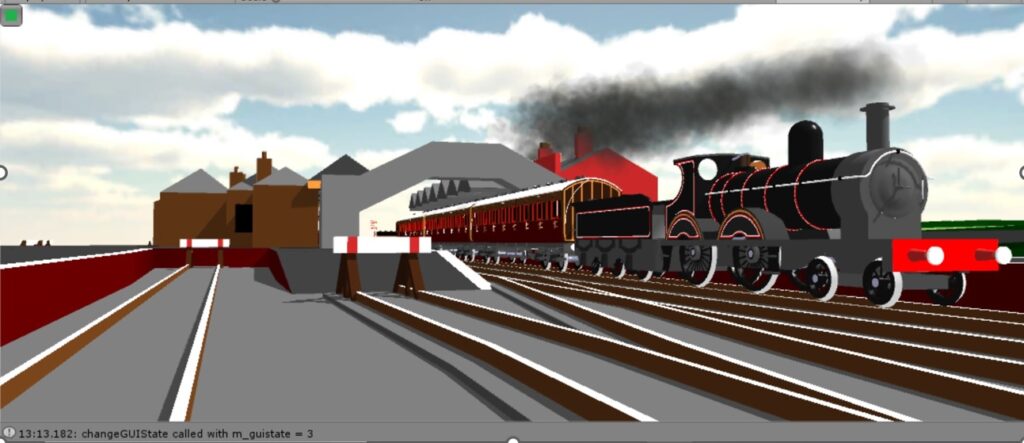Aims
We aim to model cultural and industrial heritage.
We are exploring the modelling of cultural heritage by developing a cathedral builder. More information on this can be found on our cathedral page.
We are exploring the modelling of industrial heritage by creating tools to model ships, railways and their operations.

Cultural heritage
We have been developing Cathedral Builder since June 2020. You will find more information here.
Industrial heritage
Industrial artefacts such as coal mines, railways, canals, factories, docks and ships followed certain procedures to achieve their outcomes. We aim to place statements of what happened in a narrative and use historical records of the procedures and the attributes of the artefacts to visualise how they happened. This will be achieved by writing applications that read the narrative and deduce the resulting movements of the various artefacts involved.
Rationale for industrial heritage modelling
Industrial heritage is important to the United Kingdom and the world. It provides a memory of our past and it can provide inspiration for future generations of scientists and engineers. Industrial heritage includes many artefacts displayed in very popular museums (e.g. the Maritime Museum in Liverpool, the Science Museum in London and its partners in Manchester and York) or on their original sites (e.g. Ironbridge in Shropshire). There are hundreds of heritage railway lines that attract many thousands of visitors each year.
However, many of these displays are static or operate under circumstances that cannot replicate fully the original operations. We have photographs of the way things were and some video clips but these do not give a comprehensive view of how the whole thing operated.
The development of technology has now made it possible to develop realistic visualisations of these operations that would be immediately accessible to the general public on dedicated screens within the museum or other industrial heritage complex or on-line via tablets and mobile phones.
The 3D Parametric Modelling Project aims to explore the possibilities of the technology. It also aims to develop tools that require no specialist knowledge of using 3D modelling software but will enable the rapid creation of accurate, detailed animated models. The project has gone some way towards achieving its aims.
The 3D Parametric Modelling Project has provided tools (ThingBuilder and SceneBuilder) to build animated 3D models of artefacts that include railways, ports, sailing ships and paddle steamers. It has provided another tool (ScenarioBuilder) that enables the user to generate automatically a 3D, real-time visualisation of narratives describing the actions of the artefacts.
How far we have got?
We have created tools for building ships and trains, and visualising them in operation. Examples include:
Locomotives

Carriages

Railway track

Railway infrastructure: Signal boxes

Beam Engines

Ships

Scenarios
We are using the models in animated scenarios as shown below
Shipping on the River Mersey at Liverpool

Train at Ormskirk station in Lancashire, England

